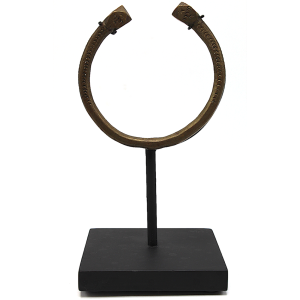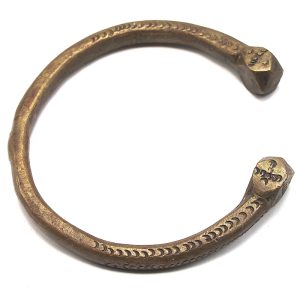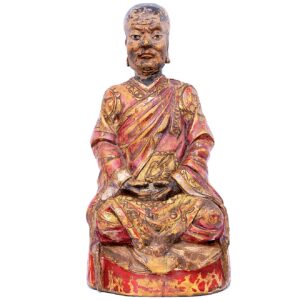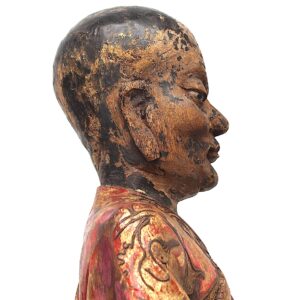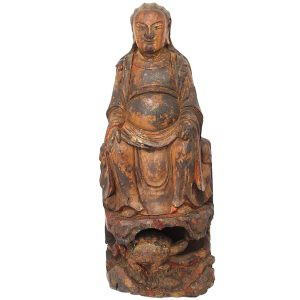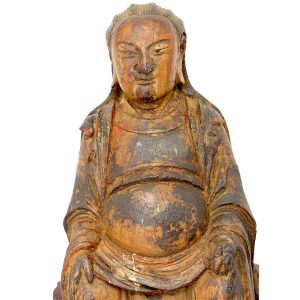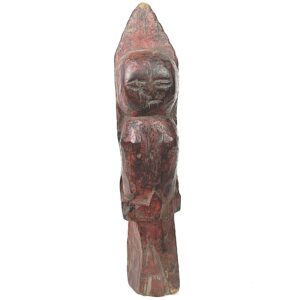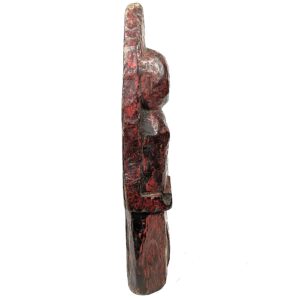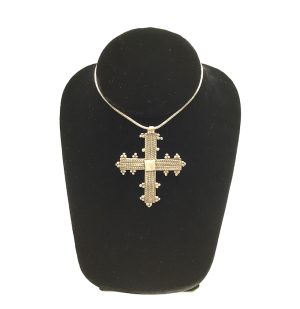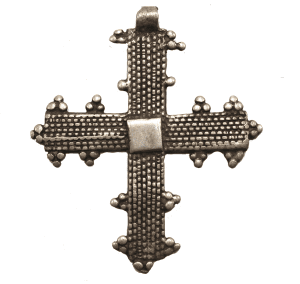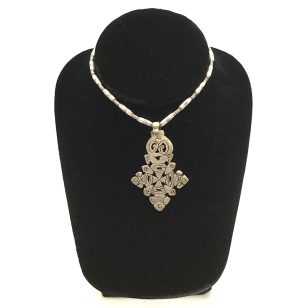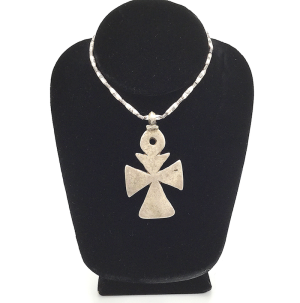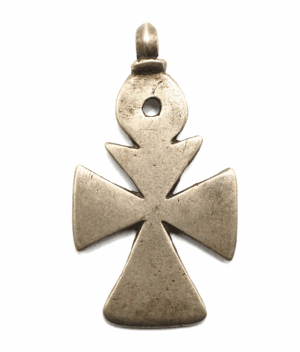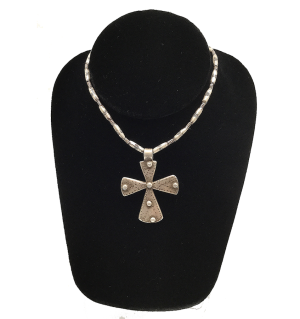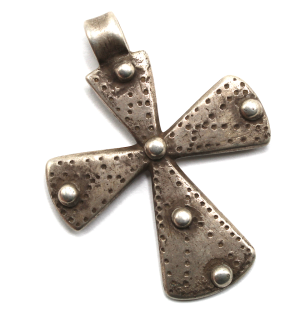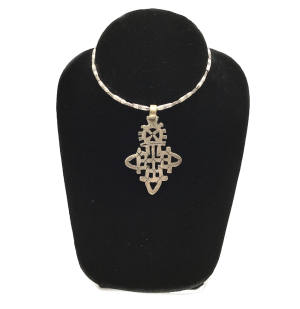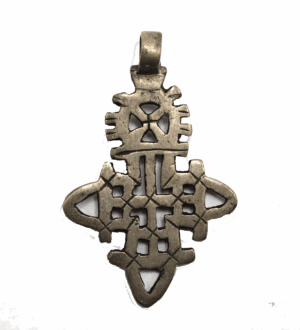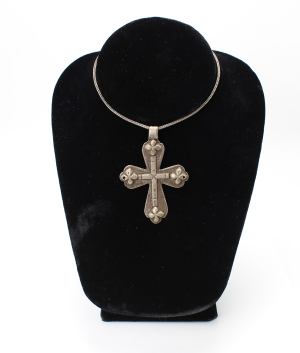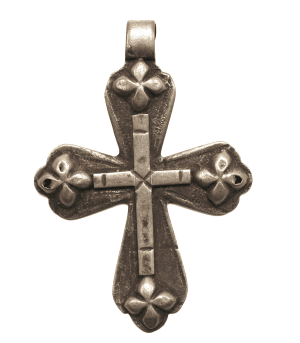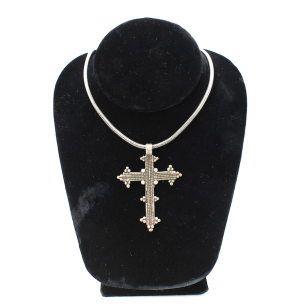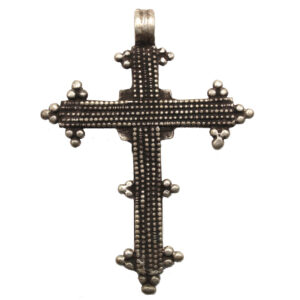Showing 109–120 of 203 results
-
Sale!


$195.00 Original price was: $195.00.$125.00Current price is: $125.00.
H: 3.5” W: 3.625” Thick: 0.50” Circum. 10.125” | FREE SHIPPING WITHIN CONTINENTAL U.S.
Finely fashioned Tuareg slim circular-shaped manilla bracelet/anklet, hand incised striated decorations, and faceted rounded beads at the open hoof-shaped terminals ends.
-


$785.00
18 original Lohans were the major disciples of Shakyamuni Buddha whom he, at his death bed, entrusted to protect and promulgate Buddhist teachings. Over centuries, their numbers increased to over 500 enlightened beings recognized for their courage and supernatural powers. In Mahayana Buddhism, Lohans represent the ideal toward which Buddhist devotees should strive as they…
-


$195.00
H: 5.25″ W: 4.5″ D: 2.875″ | FREE SHIPPING WITHIN CONTINENTAL U.S.!
This 19th-century miniature wood figure is a finely and whimsically carved portly seated merchant. He is depicted as a Laowai or “old foreigner” with a westernized face and hat and oversized hands placed on his knees. Seated on a platform base, he wears garments reflective of the Chinese culture at this time but wears a hat that is clearly not of Chinese origin. Other indications this charming figure is a foreigner include the roundness of his face, western facial features and oversized hands.
-
Sale!


$575.00 Original price was: $575.00.$495.00Current price is: $495.00.
H: 13″ W: 5″ D: 4.8″ | FREE SHIPPING WITHIN CONTINENTAL U.S.
Provincial carving of Zhenwu the Perfected Warrior, one of the most popular Taoist deities in the Ming/Qing dynasties, iconically shown standing on a snake and turtle, symbolizing those over whom he presides.
-
Sale!


$85.00 Original price was: $85.00.$55.00Current price is: $55.00.
Ht: 9..5 ” W: 2″ D:1.5 ” | FREE SHIPPING WITHIN CONTINENTAL U.S.
Antique carving of a Devi (Sanskrit: divine) probably a child’s toy and and protective item. Tikka on forehead, ample breasts – a wish for fertility with a shiny patina from use.
-
Sale!


$175.00 Original price was: $175.00.$150.00Current price is: $150.00.
Ht: 2.563″ W: 2.063″ | FREE SHIPPING WITHIN CONTINENTAL U.S.
Ethiopian Fleury cross with arms ending in 3 pointed lobes representing the Trinity. Coin silver lost wax body centered with a square and embellished with small granulates for a vibrant textured surface.
-
Sale!


$135.00 Original price was: $135.00.$120.00Current price is: $120.00.
H: 2.5” W: 1.625″ | FREE SHIPPING WITHIN CONTINENTAL U.S.
Stylized birds atop this cross artistically and spiritually transform it into the Tree of Life symbolizing the beginning of humanity and end of time, lineage of Ethiopian people to the Queen of Shebas and the wood for the True Cross. Chain necklace not included.
-
Sale!


$175.00 Original price was: $175.00.$150.00Current price is: $150.00.
Ht: 3.125″ W: 1.75″ | FREE SHIPPING WITHIN CONTINENTAL U.S.
Large heavy pendant Cross Pattée is topped with a modification of the Egyptian round ankh. Simple elegance. surmounted on softened by smooth surface and
-
Sale!


$175.00 Original price was: $175.00.$140.00Current price is: $140.00.
Ht: 2.625″ W: 1.625″ | FREE SHIPPING WITHIN CONTINENTAL U.S.
From the Shoa region, this simple but elegant Ethiopian Cross Pattée with flaring arms was made using the lost-wax process and embellished with 6 round protruding bosses and etched dots.
-
Sale!


$135.00 Original price was: $135.00.$115.00Current price is: $115.00.
H: 2.75” W: 1.625″ | FREE SHIPPING WITHIN CONTINENTAL U.S.
Cross displaying distinctive tri-partite Coptic cross design with rounded horizontal arms and bottom symbolizing the Trinity. The partial circle symbolize eternity and is an apotropaic symbol to avert the “evil eye.”
-
Sale!


$275.00 Original price was: $275.00.$220.00Current price is: $220.00.
H: 2.75″ W: 1.75 ” | FREE SHIPPING WITHIN CONTINENTAL U.S.
Antique/vintage coin silver Fleury Cross centered with raised Latin Cross with bordered edge. Three florals trefoil lobes at the arms symbolize the Holy Trinity, new growth and renewal of life. Lost wax, one-of-a-kind.
-
Sale!


$175.00 Original price was: $175.00.$150.00Current price is: $150.00.
Ht: 2.375″ W: 1.937″ | FREE SHIPPING WITHIN CONTINENTAL U.S.
This magnificent antique/vintage coin silver Ethiopian Fleury Cross with arms in 3 pointed lobes and tri-part decorative designs represents the Trinity. Attached small granulates added after lost wax process creates a wonderful textured surface
End of content
End of content

